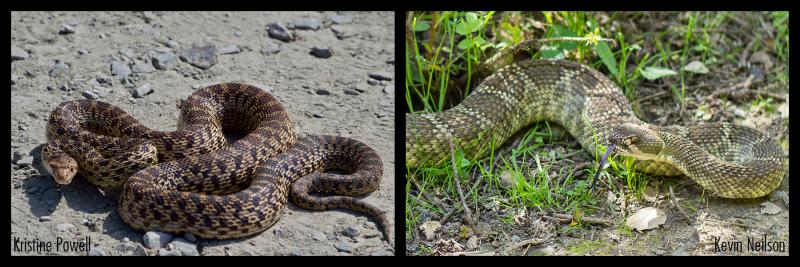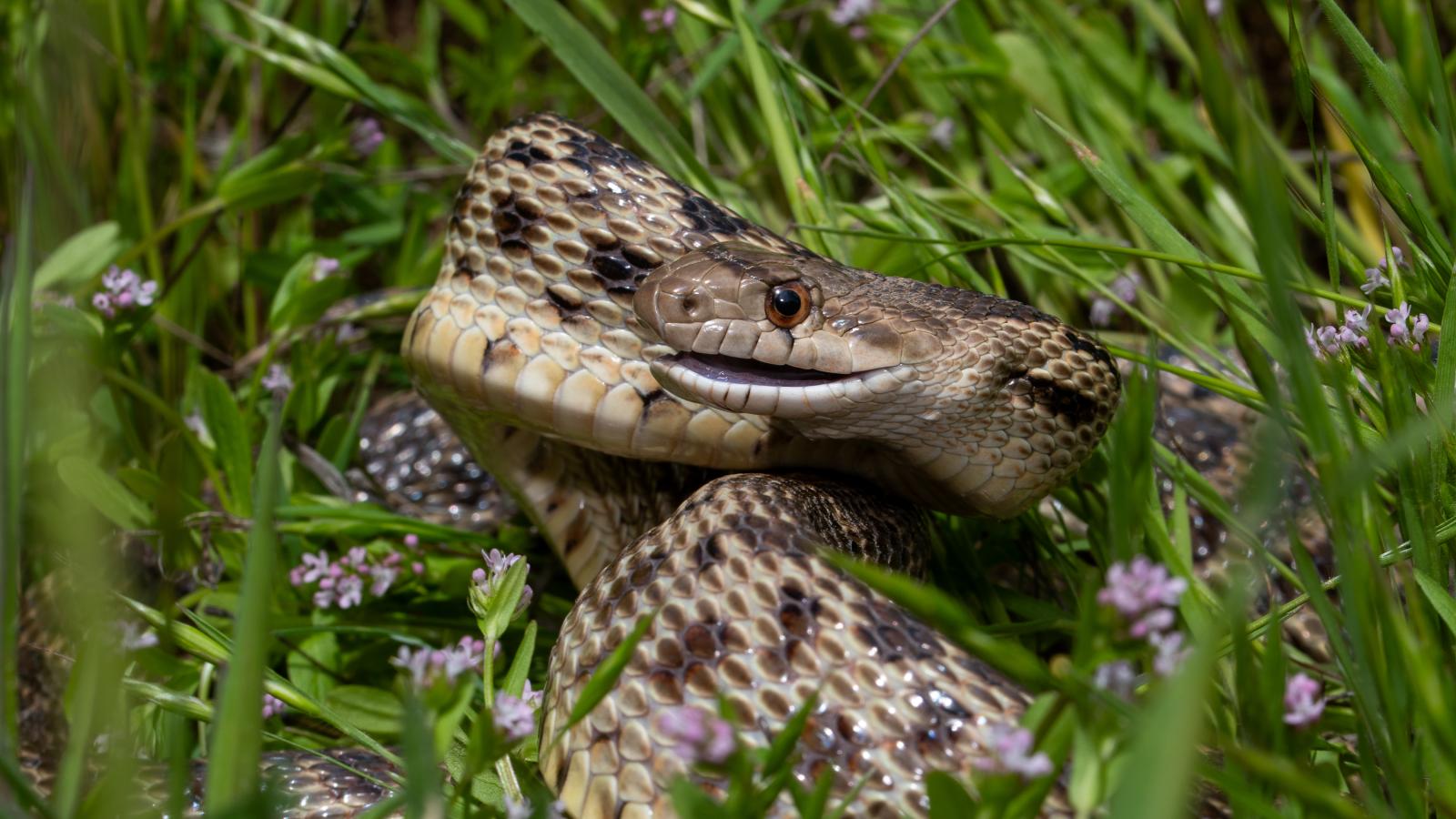Published August 7, 2025
When enjoying Midpen preserves in the warmer months, keep an eye out for snakes. Sometimes that slow moving stick isn't a stick after all. Dozens of snake species call Midpen lands home. From the mesmerizing black and white banded California kingsnake to the racing racer, Midpen actively works to maintain and restore native habitats for our fork-tongued friends.
Snakes are ectothermic (cold blooded) meaning they can’t internally regulate their body temperature and are reliant on external heat sources. Because of this, snakes are most likely to be observed between spring and fall soaking up the sun. They can often be found in, under or on top of logs, rocks, and other debris, splaying out across a trail, or even in trees.
Snakes are a key part of the ecosystem, acting as a natural population control for rodents. They are also a necessary food source for raptors, coyotes and even each other.
Gopher snakes, Pacific ring-necked snakes, California and mountain king snakes, rubber boas, various species of garter snakes and racers, sharp-tailed snakes and Northern Pacific rattlesnakes call Midpen preserves home.

Snakes have evolved with some amazing tricks up their sleeves. The gopher snake, a commonly sighted snake often bolstering a tan body with darker brown splotches, shares characteristics and sometimes mimics behaviors of the rattlesnake. Gopher snakes can flatten their heads to appear more diamond shaped and shake their tails to scare away potential threats. Another impressive adaptation is the kingsnake’s resistance to venom, enabling them to safely consume rattlesnakes. This in combination with their impressive constriction earns them the title of king.
What’s that rattling noise? Nope, it’s not a maraca, it’s the Northern Pacific rattlesnake. As the Bay Area’s only venomous snake, you don’t want to mess with this predator. If you happen to encounter one on an outdoor excursion, don’t panic. Rattlesnakes will not attack unless they feel threatened. To minimize the risk of a bite, wear hiking boots, stay on the trail, avoid tall grass, watch your step, remain attentive, and give rattlesnakes the right of way. As long as you respect a rattlesnake's space, there is nothing to fear.
One amazing adaptation of rattlesnakes is their heat sensing pit organs. Located between the eye and nostril, the pit organ allows for thermoregulation and potentially improves their ability to sense the heat of their warm-blooded prey.

